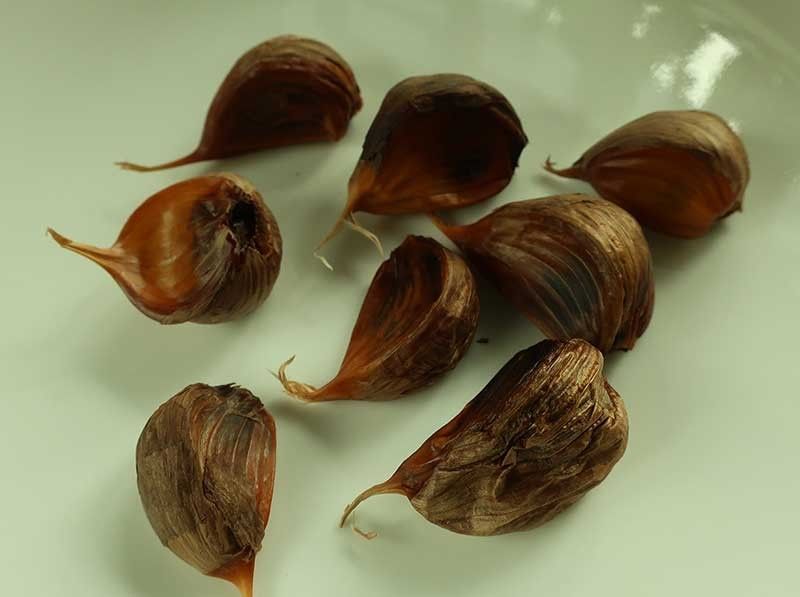Aged version: Culinary uses, benefits of Black Garlic

MANILA, Philippines — These days, people are talking about black garlic and its health benefits. It is a new phenomenon in the natural food category as a medicine front, and it comes from different places, particularly Japan.
It is present in the United States of America (US), United Kingdom (UK), and all around Asia and Europe. A farmer in the UK, Mark Botwright, even claims to have developed a process for preserving garlic after finding a 4,000-year-old Korean recipe for black garlic. There are also local sources such as Ilocos Norte.
Black garlic is a type of aged garlic with cloves that appear as brown, brown black or black. Black garlic is made using a process that is of East Asian origin.
According to the article "Black garlic: A critical review of its production, bioactivity, and application" published in the Journal of Food and Drug Analysis, black garlic is "made by placing garlic (Allium sativum) in a warm, moist, and controlled environment over the course of several weeks, a process that produces black cloves.”
The environment within which the garlic is aged has a controlled humidity of 80 to 90% and a temperature of between 60 to 90°C or 140 to 190°F for 15 to 90 days. Typically, it is left to age at 40 days given an average humidity of 85% and temperature of 70°C. No preservatives or additives are added to the garlic, so the darkening of the cloves to different shades of black arises from a long-term, low-temperature Maillard reaction. Aside from the blackish color, the cloves develop a sticky texture that resembles dates or prunes.
With the color, the flavor of the garlic also changes as it turns black. The pungency of fresh garlic disappears little by little as it changes color, and by the time that it is black, the pungency disappears entirely and flavors of molasses, tamarind, balsamic vinegar, and caramel develop. So when you eat it, it does not taste like garlic at all.
Black garlic has several culinary uses. You can eat it as it is, perhaps as a health and nutritional supplement, or in soups or sauces. It can also be enjoyed on bread, crushed and added to mayonnaise or vinaigrette salad dressing, or added to fish, meat or vegetable dishes.
The real fuzz about black garlic is its supposed health benefits, as it is believed to help boost the immune system. Studies have indicated that black garlic is loaded with antioxidants, with properties that can help fight cancer.
Lab research findings are encouraging, with black garlic extract said to help reduce the growth of several types of cancer cells, including colon, stomach, and breast cancer, even blood (leukemia). The disease-fighting antioxidants present in black garlic is said to be higher than that in raw garlic.
Black garlic helps protect the heart by reducing inflammation and improving blood flow in the heart and arteries, lowering levels of bad cholesterol and triglycerides. It also helps control blood sugar levels, so it is good for diabetics and those with kidney problems. Likewise good for brain health, black garlic may help prevent conditions like Alzheimer’s disease and Parkinson’s disease, particularly in the elderly, who are prone to such conditions.
Black garlic contains a lot of other vitamins, minerals and nutrients. But, as always, before you swear by it, it does not hurt to consult your doctor. Stay healthy!



















